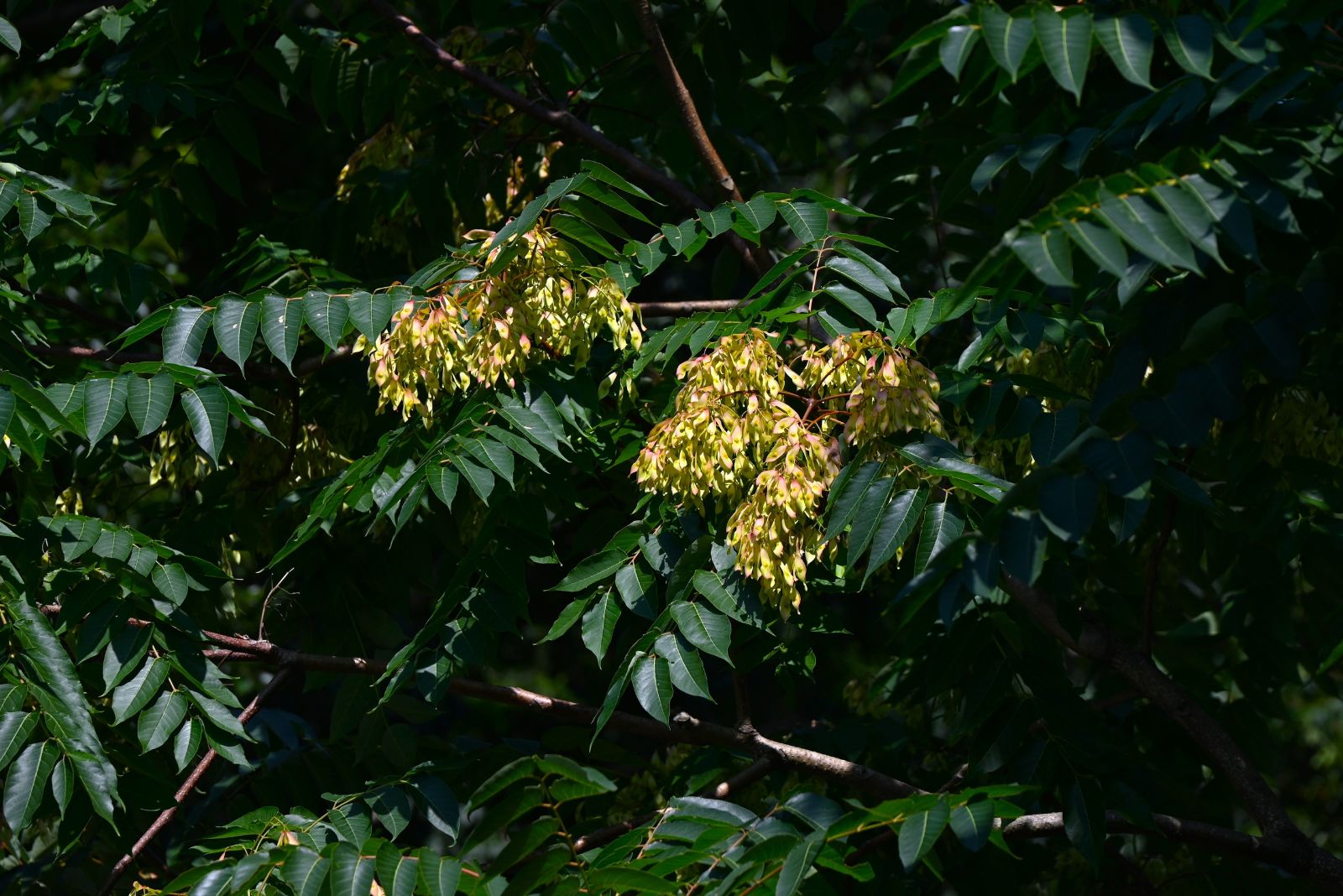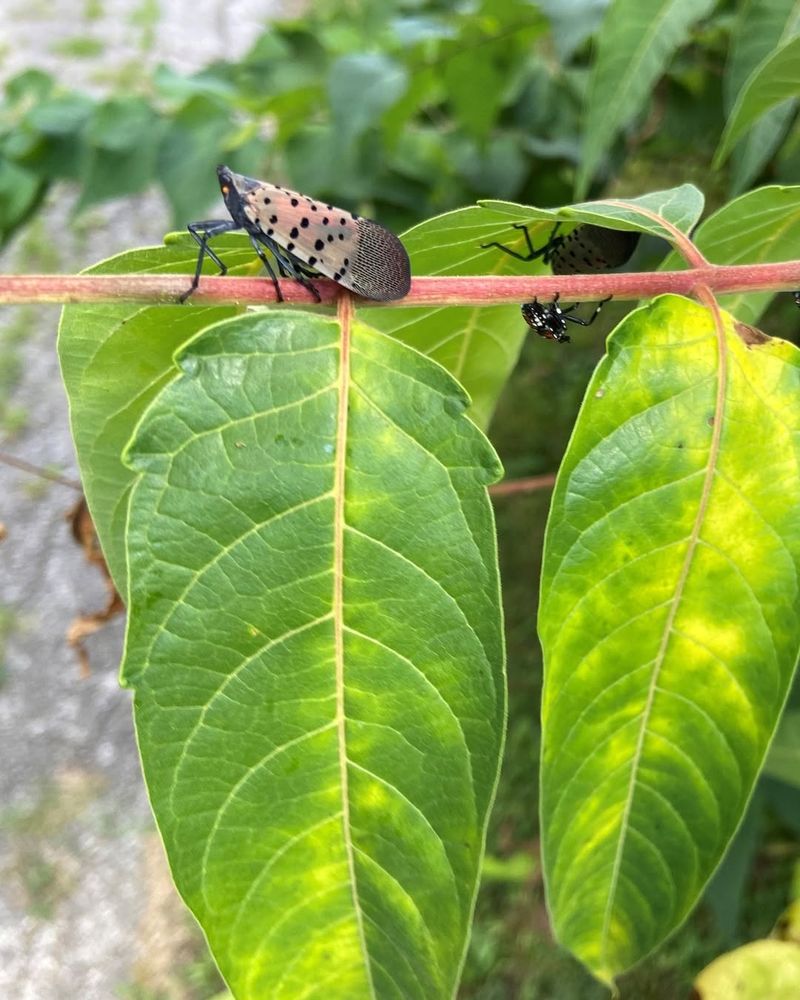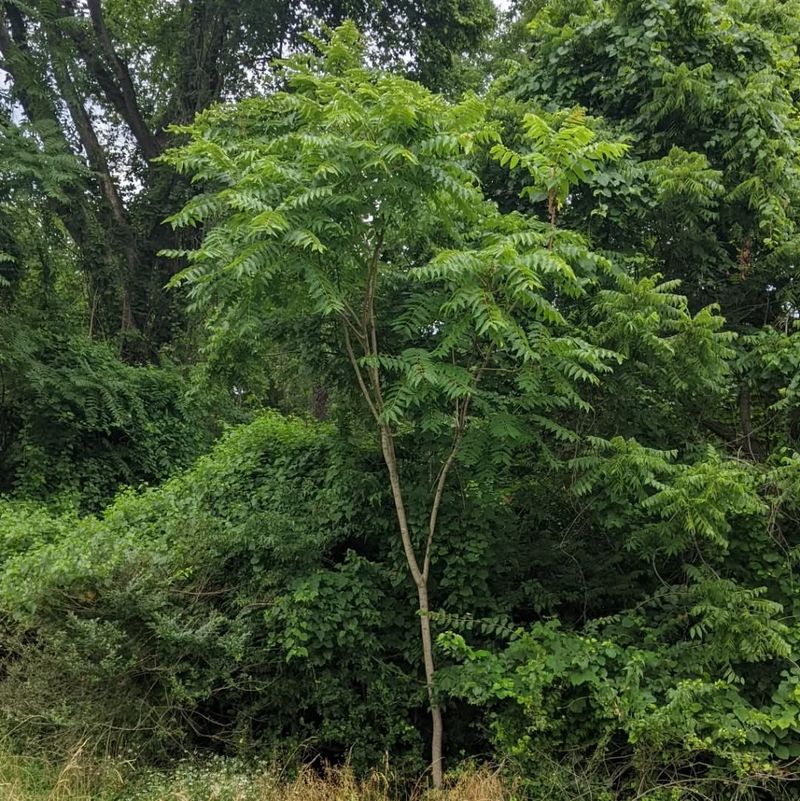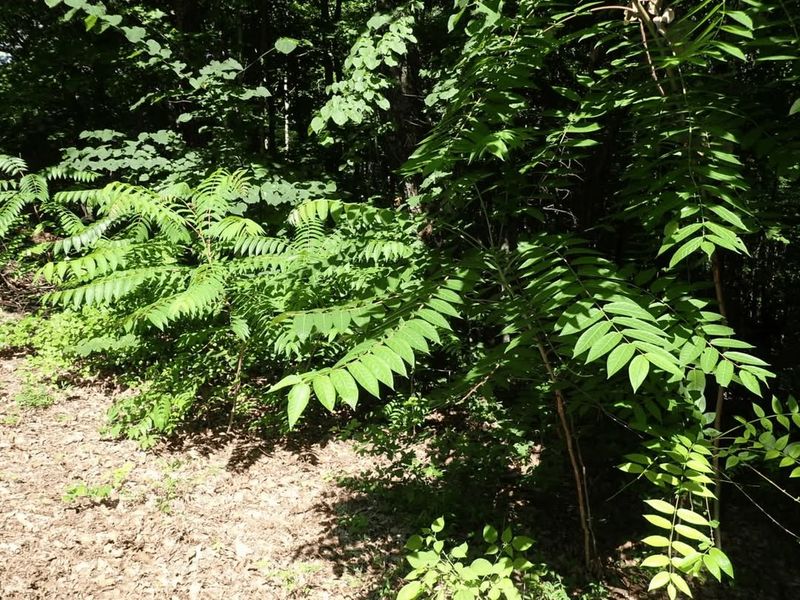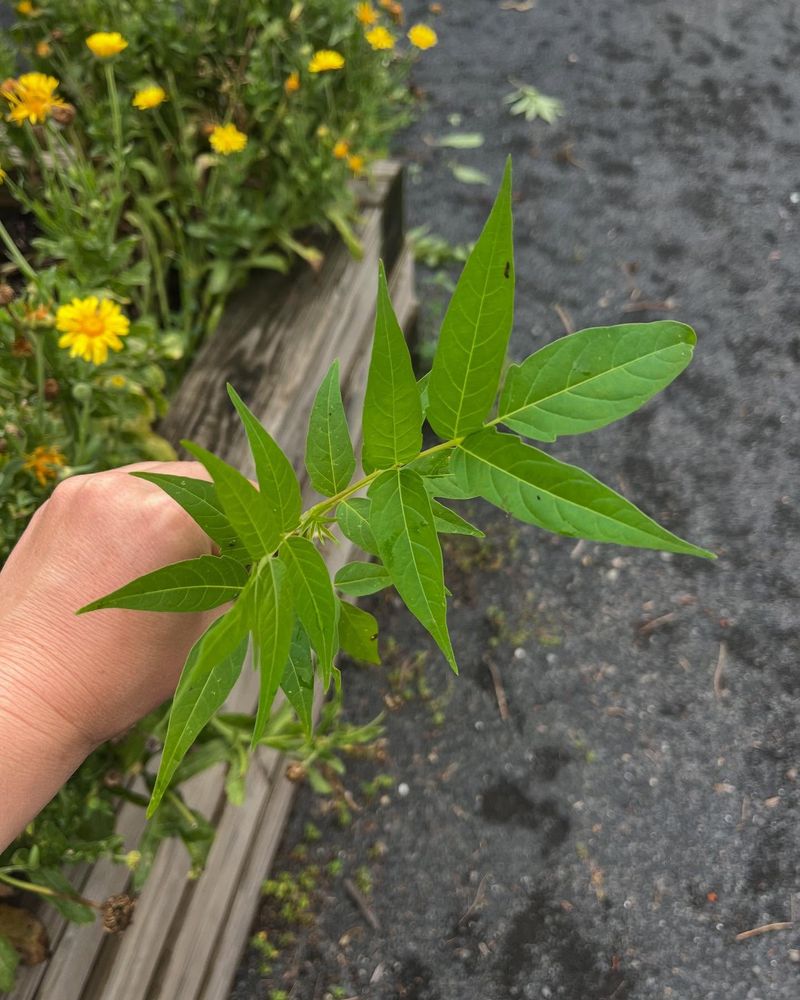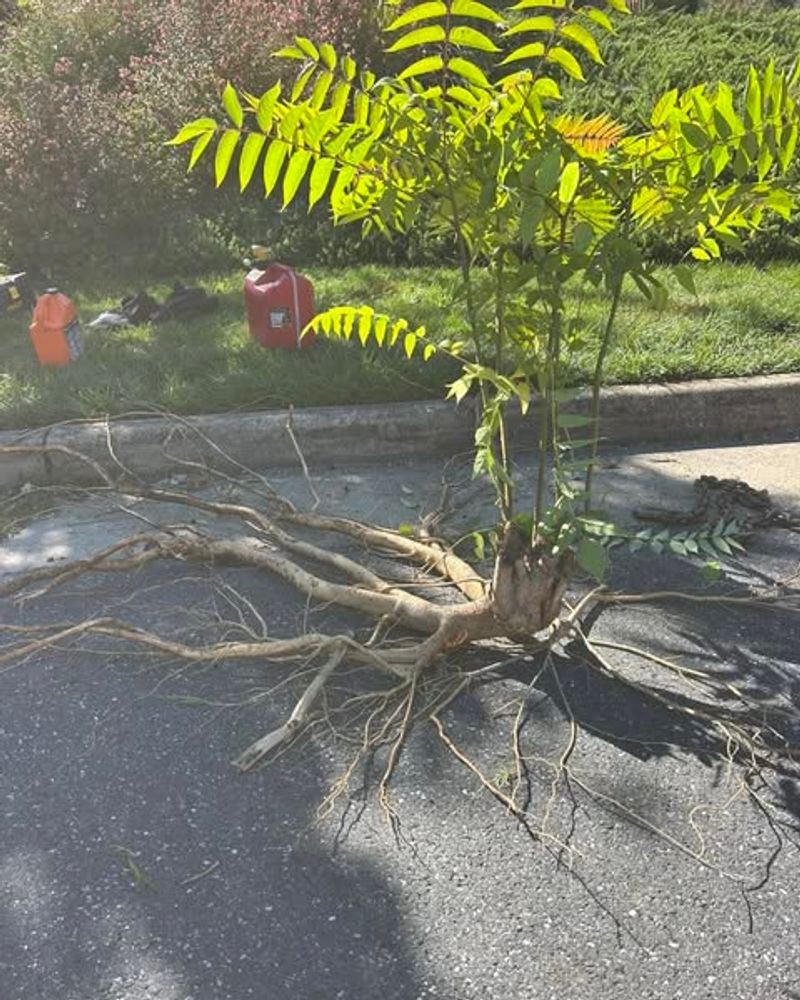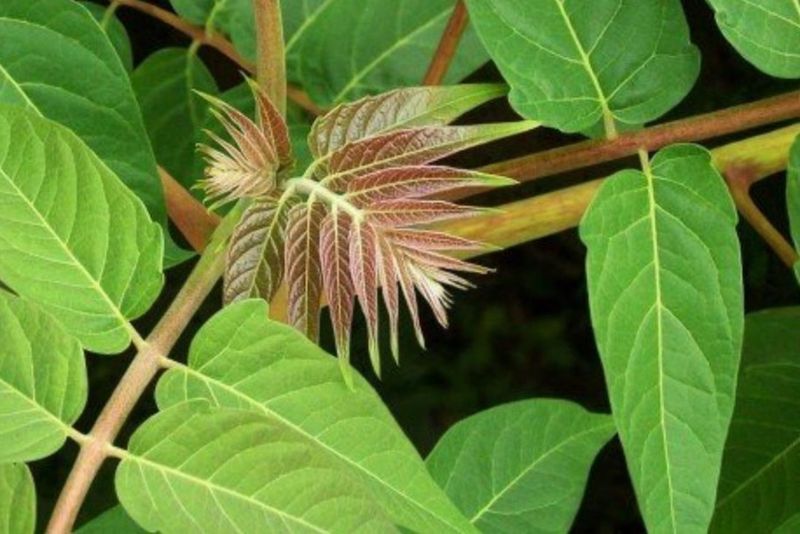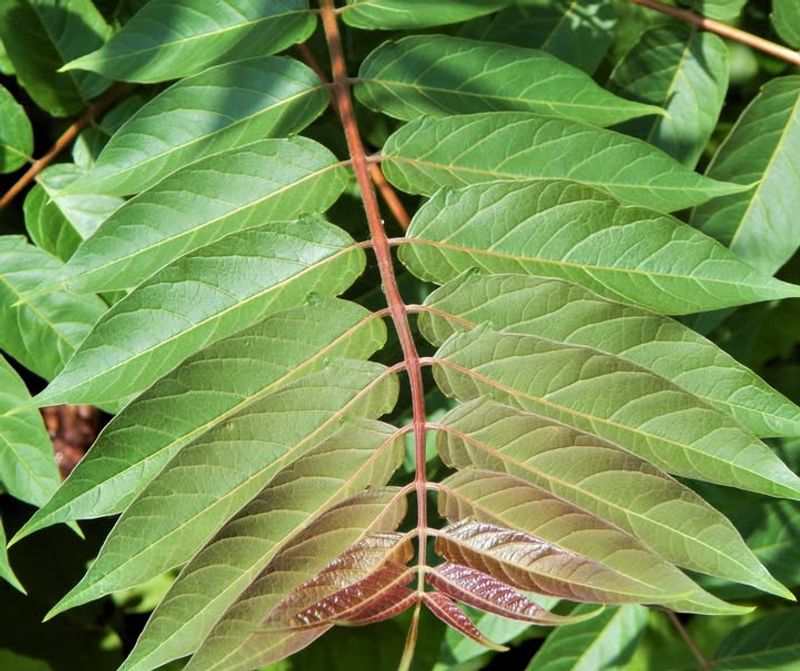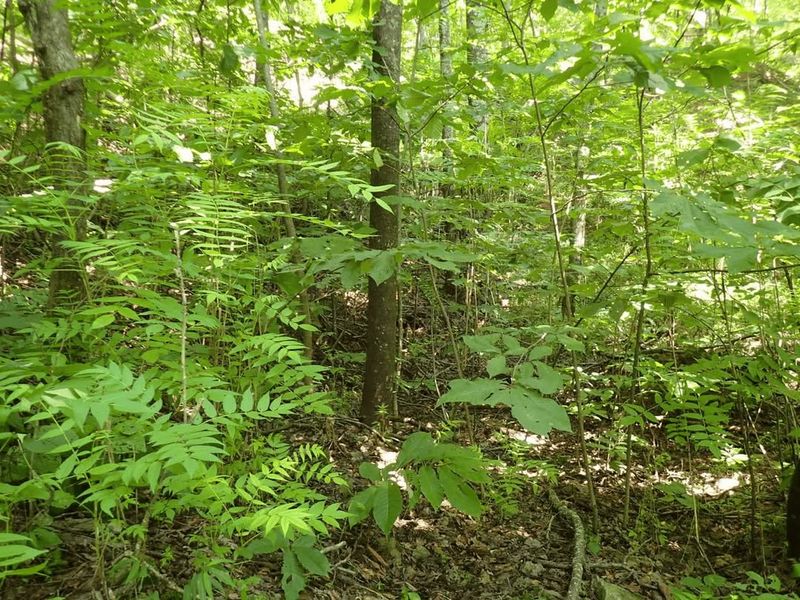Lanternflies have been turning Ohio yards upside down, and one tree in particular keeps drawing them in like a magnet. Homeowners across the state are learning that planting this troublemaker can open the door to a full blown invasion.
The pests swarm fast, spread even faster, and leave a mess that can turn a healthy yard into an eyesore. By steering clear of the tree that fuels their takeover, Ohio residents stand a better chance of keeping these hitchhikers off their property and stopping the problem before it snowballs.
1. Lanternflies Love Tree Of Heaven More Than Any Other Plant
Tree of Heaven acts like a five-star hotel for spotted lanternflies. Female lanternflies prefer laying their eggs on this tree’s bark more than anywhere else, creating massive populations right in your backyard.
Once they hatch, the young insects feed on the tree’s sap, growing stronger and multiplying rapidly. This creates a cycle that’s nearly impossible to break if the tree remains on your property.
Removing this tree eliminates their favorite breeding ground and significantly reduces lanternfly numbers around your home in Ohio.
2. The Tree Spreads Faster Than Weeds In Your Garden
You might plant one Tree of Heaven, but you’ll soon have dozens. This aggressive grower sends out underground roots called suckers that pop up everywhere, creating new trees faster than you can pull them.
A single tree can produce over 300,000 seeds annually, and they travel far on the wind. Your neighbor’s tree problem quickly becomes your problem too.
Controlling this spreading nightmare takes constant effort, making prevention through removal the smartest choice for Ohio homeowners.
3. Chemical Compounds Harm Your Other Garden Plants
Tree of Heaven releases toxic chemicals into the soil through its roots and fallen leaves. These compounds, called allelopathic substances, poison the ground around the tree and prevent other plants from thriving.
Your beautiful flower beds, vegetable gardens, and lawn grass struggle to survive near this aggressive competitor. The chemicals essentially create a zone where nothing else can grow properly.
Getting rid of this tree allows your soil to recover and your desired plants to flourish again without chemical interference.
4. Touching The Tree Can Cause Painful Skin Reactions
Many people discover too late that Tree of Heaven causes itchy, painful rashes on contact. The tree’s sap and leaves contain irritating compounds that trigger allergic reactions in sensitive individuals, especially children who play outside.
Cutting or removing the tree without proper protection makes the problem worse, as fresh sap is particularly potent. Gardeners and landscapers often experience burning sensations and red, inflamed skin after working around these trees.
Keeping this hazardous plant away from your property protects your family from unnecessary discomfort.
5. Root Systems Damage Foundations And Sidewalks
Beneath the surface, Tree of Heaven roots grow with destructive force. These powerful underground networks crack concrete driveways, lift sidewalks, and even threaten home foundations as they expand outward seeking water and nutrients.
Repair costs for foundation damage can reach thousands of dollars, far exceeding the expense of removing the tree early. Sewer lines and underground utilities also face risk from these aggressive roots.
Smart homeowners in Ohio eliminate this tree before it causes expensive structural problems to their property and infrastructure.
6. Foul Odor Makes Outdoor Spaces Unpleasant
Ever wonder why some yards smell like rotten peanut butter mixed with gym socks? That’s the signature stench of Tree of Heaven. When leaves are crushed or branches break, this tree releases an incredibly unpleasant odor that lingers in the air.
Male trees during flowering season smell even worse, making your outdoor barbecues and family gatherings uncomfortable. The smell clings to clothing and can drift through open windows into your home.
Nobody wants their property known as the smelly house in the Ohio block.
7. Creates Perfect Habitat For Additional Invasive Pests
Lanternflies aren’t the only unwanted guests this tree attracts. Tree of Heaven becomes a hub for various invasive insects, disease-carrying bugs, and other pests that damage surrounding plants and trees in your neighborhood.
The tree’s weak wood and rapid growth create plenty of hiding spots and breeding areas for problem insects. Once established, these pest populations spread to healthier native trees nearby.
Removing Tree of Heaven helps protect the entire local ecosystem from multiple invasive species at once, not just lanternflies.
8. Crowds Out Native Ohio Trees And Wildlife Habitat
Ohio’s beautiful native trees like oaks, maples, and hickories can’t compete with Tree of Heaven’s aggressive growth patterns. This invasive species steals sunlight, water, and soil nutrients that native trees need to survive and provide homes for local wildlife.
Birds, squirrels, and beneficial insects depend on native trees for food and shelter that Tree of Heaven simply cannot provide. When this invasive tree dominates an area, biodiversity plummets dramatically.
Protecting Ohio’s natural heritage means removing invasive species and giving native trees room to thrive.

